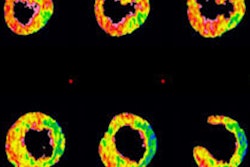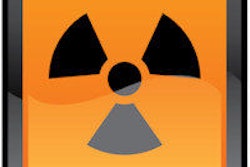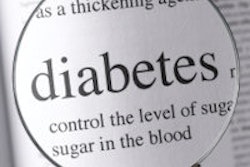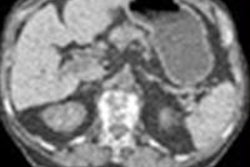
Patients must be protected from unnecessary radiation exposure, but what about radiologists who perform interventional exams, particularly CT-guided procedures? German researchers found that radiologists have a low risk of overexposure -- if appropriate precautions are taken.
In a new study published online in the Journal of the American College of Radiology, the researchers investigated absolute radiation exposure values and factors that influence interventionists' radiation exposure during CT-guided procedures. Although the risk of overexposure to radiation is low, radiologists certainly need to follow shielding protocols, they found.
CT-guided interventions are being done more often, and radiologists are vulnerable to radiation exposure due to their presence in the exam room, the position of their hands relative to the x-ray beam, and the length and complexity of the procedure, according to lead author Dr. Nils Rathmann, from University Medical Center Mannheim, Heidelberg University, and colleagues. If the target lesion cannot be reached with an in-plane projection, the angle of the gantry could expose the radiologist to extensive amounts of radiation (JACR, July 30, 2014).
"Radiation exposure levels for staff do not necessarily correlate with those of the patient; thus, patient dose measurements (such as dose-area product) cannot be used to determine exposure for personnel," the authors wrote.
The researchers analyzed absolute radiation dose values from a total of 131 CT-guided interventions performed between 2009 and 2012. To measure dose, the subjects wore thermoluminescent dosimeters in the following areas: forehead, thyroid, chest, inguinal, and hands and feet. Radiation doses were then analyzed with respect to the following factors:
- Experience level of the person performing the procedure
- Difficulty of the procedure on a four-point Likert scale (1 being very easy to 4 meaning very difficult)
- Lesion size on a three-point Likert scale (small was less than 1 cm; medium was 1 cm or larger, up to 4 cm; and large was 4 cm and larger)
- CT system used (dual-source versus 16-slice multidetector)
Interventional radiologists with different levels of experience performed the exams. Rathmann's team considered a radiologist to be experienced if he or she had done more than 50 CT-guided interventions (67 of the 131 procedures); all others were classified as inexperienced (64 procedures).
During the interventions, the radiologists wore protective aprons of 0.35-mm or 0.5-mm lead equivalent, including a thyroid collar. Median time for the procedures was 15 minutes for inexperienced radiologists and 14 minutes for experienced ones.
In general, the measured doses were relatively low, with 96.7% below 100 microsieverts and 99.5% below 500 microsieverts, according to the authors. Only 0.3% of the doses were higher than 1,000 microsieverts.
Fifty thousand microsieverts, or 50 millisieverts, is considered the lowest dose at which cancer could result in adults. It is the highest dose allowed by regulation in any one year of occupational exposure, according to the U.S. Nuclear Regulatory Commission.
Most of the elevated doses were measured at the right hand, Rathmann and colleagues wrote, although for extremities in general, 87.2% of all values were less than 50 microsieverts. The median whole-body dose was 12 microsieverts. Except for the forehead dose, all whole-body radiation doses were statistically significantly lower with the dual-source CT (DSCT) system versus 16-slice MDCT (Somatom Definition and Somatom Emotion, Siemens Healthcare).
"Radiation dose differences between the two observed CT systems may be explained by the differences in the gantry z-axis diameter between the 16-slice MDCT and the DSCT system, in that the DSCT has more gantry cover from the isocenter," the authors wrote. "This difference clearly demonstrates that distance or positioning with respect to the gantry ... is important to reduce radiation exposure."
For CT-guided interventions that were characterized as more complex, the radiation exposure of the radiologist performing the procedure was statistically significantly higher, with the exception of the left hand, according to the group. In addition, median whole-body dose was significantly lower for inexperienced radiologists, compared with the experienced group. Inexperienced radiologists performed more biopsies on larger lesions, and the larger the lesion, the lower the radiation dose used, the authors noted.
Yet, overall, radiologists don't have to worry about radiation exposure during CT-guided interventions -- as long as they're taking the necessary precautions, Rathmann and colleagues wrote.
"Consistent with other studies regarding radiation exposure of medical staff during angiography, the current results show that the annual dose limits for the whole body, the eye lens, and the thyroid gland are not exceeded during [CT-guided interventions] when appropriate personal shielding is used," they concluded.



















